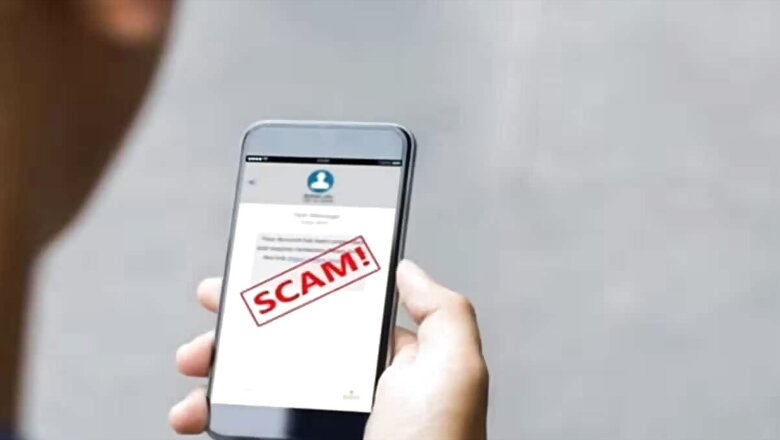
views
As of April 30, the telecom ministry has disconnected about 1.66 crore connections to combat fraud, officials told News18, even as a recent report claimed that telecom operators are set to disconnect about 18 lakh mobile connections nationwide due to fraudulent activities.
These actions follow a detailed investigation spearheaded by law enforcement agencies, including the Department of Telecommunications (DoT), and are part of the government’s broader strategy to secure the telecommunication landscape against financial scams in the country.
Fraudsters who are trying to communicate with prospective victims via calls, messages or WhatsApp would find it difficult to clinch success as the agencies have been following a multi-tier approach, using several key platforms which not only help the citizens, but also assist the agencies to find out such scammers.
SANCHAR SAATHI, CHAKSHU & DIP
In May 2023, the DoT launched a citizen-centric platform, Sanchar Saathi, for safety of mobile phone users. Since then, citizens have been using this portal to discover how many SIM cards have been issued in their names, specific numbers that they feel someone has stolen by fraudulently exploiting their identities, and urging the authorities to block the numbers.
Sanchar Saathi data shows that by mid-May 2024, over 16 lakh mobiles were blocked and more than 8 lakh mobiles were traced after being stolen or lost. This initiative helped the authorities to make sure that none of these mobile phones could be used for fraudulent activities.
Using the ‘Know your mobile connection (TAFCOP)’ service on the Sanchar Saathi portal, citizens have filed over seven lakh requests to the authorities. This has allowed the users to check the number of mobile connections taken in their names, making it easier to report mobile connections that are either unnecessary or are not used by the subscribers.
However, now C-DOT, the research wing of the telecom ministry, is working on the Sanchar Saathi app, which promises to bolster the government’s efforts in handling telecom-related fraud cases. This app will provide a user-friendly interface for citizens to report and track fraudulent activities.
Following the success of Sanchar Saathi, the DoT rolled out Chakshu and the Digital Intelligence Platform (DIP) in March 2024 to enhance their efforts in curbing telecommunication-related cybercrime. As a result, these platforms turned out to be pivotal in identifying and addressing fraudulent activities involving mobile connections.
Chakshu serves as a vital tool for citizens to report suspected fraudulent communications. By empowering users to report suspicious activities via calls, SMS, or WhatsApp, Chakshu aids in detecting and blocking the misuse of telecom resources.
DoT officials told News18 that by April 30 this year, 1.58 lakh IMEI (International Mobile Equipment Identity) numbers associated with cybercrimes were identified and blocked. By blocking the IMEI numbers, the authorities have effectively disabled these handsets from accessing any telecommunication networks, preventing the devices from being used for further illegal activities. Additionally, about 10,000 to 11,000 mobile numbers have been flagged for re-verification in Chakshu, and 52 Principal Entities (PEs) have been blocked due to suspicious activities.
Aimed at fostering collaboration among stakeholders such as the DoT, Ministry of Home Affairs (MHA), and other relevant entities, the Digital Intelligence Platform (DIP) was launched to streamline the efforts to combat telecom-related cybercrime and financial fraud. The officials stated that by pooling resources and intelligence from various agencies, DIP enhances the overall capability to identify and prevent the misuse of telecom services.
For example, recently the DoT, MHA and state police jointly unlocked telecom-related cyber fraud cases. Following this, the DoT issued directions for blocking 28,200 mobile handsets and re-verification of associated 20 lakh mobile connections.
A DoT official said: “The MHA gave DoT a list of mobile numbers, which they might have received from police stations and other sources. We then checked our database for other numbers which are associated with them. As a result, over 28,000 such numbers were found and we disconnected all those numbers.”
“The mechanism works in this way. Suppose a mobile phone was lost or stolen, but police got hold of such handsets which are suspicious as no owner was found. We then check the handset’s IMEI numbers and try to find out how many telecom connections were associated with these numbers. Following this process, we found traced 20 lakh SIM cards. The second step is to check whether the SIM cards were used in some other handsets. So it is possible that in the coming time, the number will be much bigger than 28,200 handsets. Similarly, if after the physical verification, issues are found, those mobile numbers will also be blocked. By doing these, we can catch gangs of scammers,” the official added.
RECENT ACTIONS
The effectiveness of these initiatives is also evident in recent enforcement actions. In Varkala, Kerala authorities arrested a shopkeeper who had supplied 250 illegally arranged SIM cards to fraud groups. The investigation uncovered a network involving Malayalees abroad, leading to the recovery of 40,000 SIM cards and 180 mobile phones. Similarly, a recent raid in Rajasthan unveiled a significant network of illegal SIM card sellers, underscoring the pervasive nature of this issue.
For those who are worried about the fraudulent messages over WhatsApp, DoT officials said: “Whenever we get the information about such numbers, we share it with DIP stakeholders and WhatsApp, which then take action and log them out permanently from the messaging platform.”
However, apart from all these initiatives, the Telecom Regulatory Authority of India (TRAI) is also developing the Calling Name Presentation (CNAP) system, akin to Truecaller, which will display the caller’s name on the recipient’s phone screen. The telecom ministry officials believe that this initiative will enhance transparency and security in telecommunication, helping users to identify legitimate calls and avoid potential scams.
Explore in-depth coverage of Lok Sabha Election 2024 Schedule, Voter Turnout, Upcoming Phase And Much More At News18 Website




















Comments
0 comment